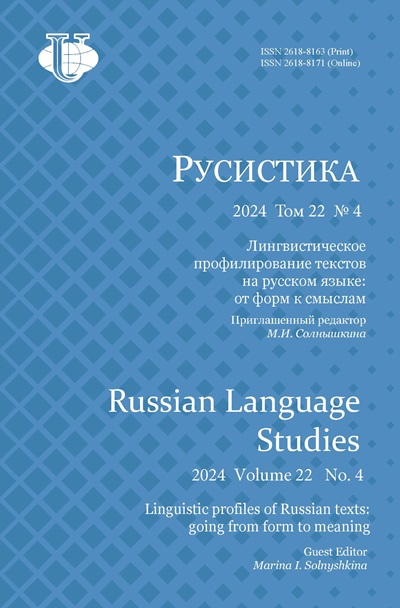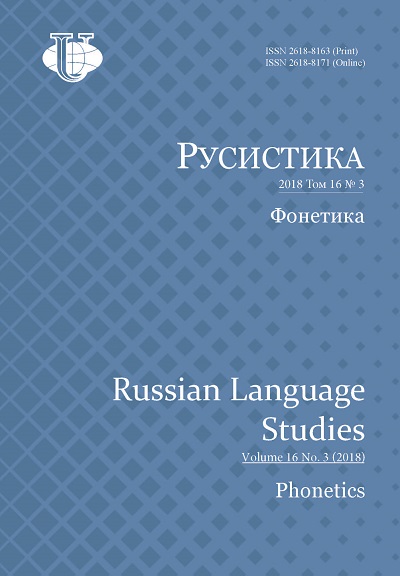Abstract
The research deals with natural perception of word boundaries by native speakers of Standard Russian. A specific feature of Russian word rhythmic structure is a so-called “prosodic core”: not only stressed, but also first pre-stressed vowels differ in duration and quality from vowels that occur in other positions, a phenomenon that is also commonly described as two degrees of reduction. The purpose of this study is to find out whether native Russian speakers are able to use acoustic differences between vowels [ɐ] (Degree 1 reduction) and [ə] (Degree 2 reduction) in order to recognize word boundaries correctly. The stimuli for the experiment were nonce words, five-syllable sequences including two stressed vowels; they were presented to the participants of the experiment in a form of fictional foreign names. The listeners were asked to choose between two possible ways of segmentation of these fivesyllable sequences into a first name and a second name of a person. The results of the experiment show that native Russian speakers used the acoustic differences between vowels for segmentation, but the results were statistically significant only for some of the stimuli. However, for half of stimuli the listeners performed correct segmentation at chance level. In addition, artificial modification of first pre-stressed vowel duration was performed for some of the stimuli; the participants’ responses show that vowel duration influences the degree of success in the segmentation task.















